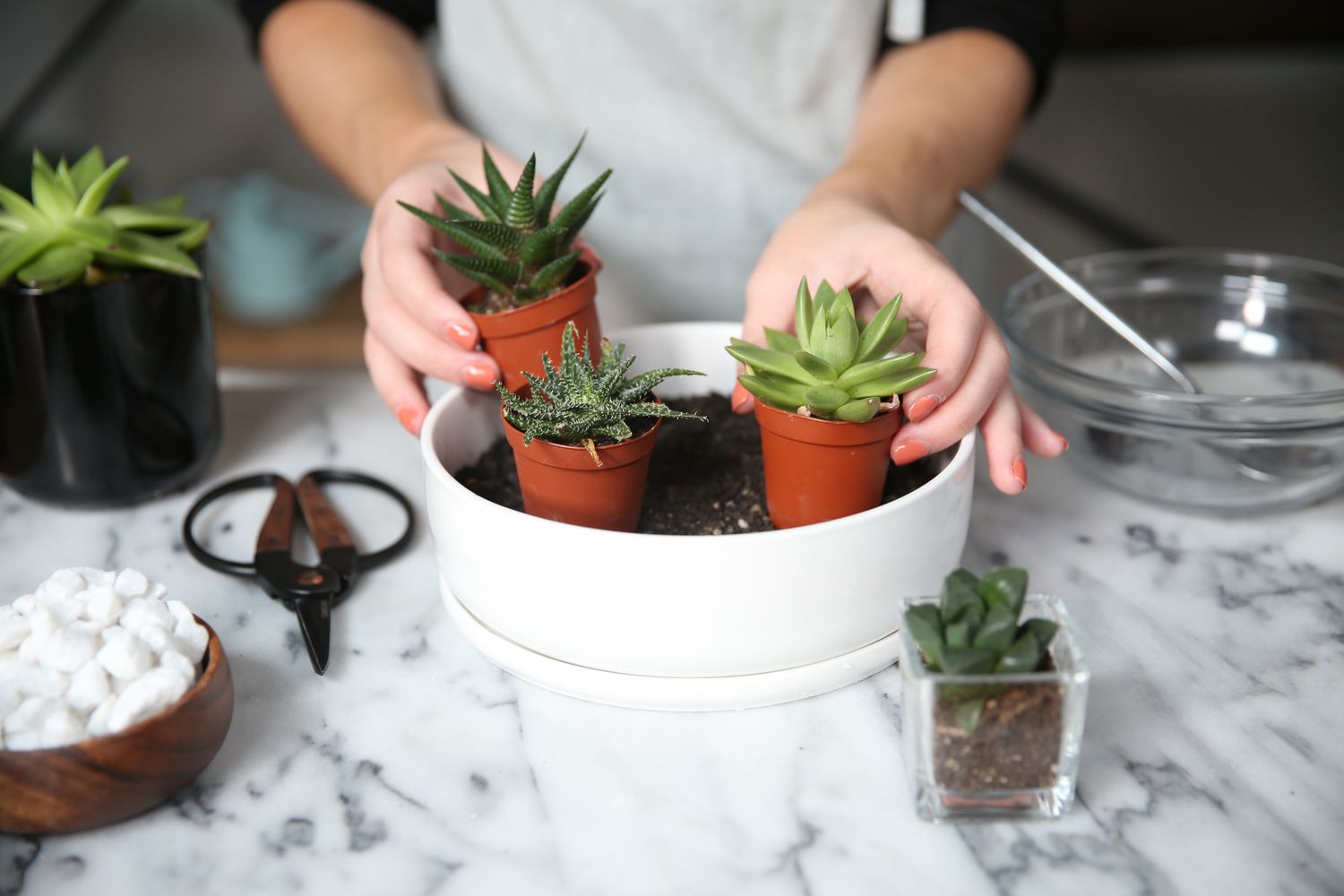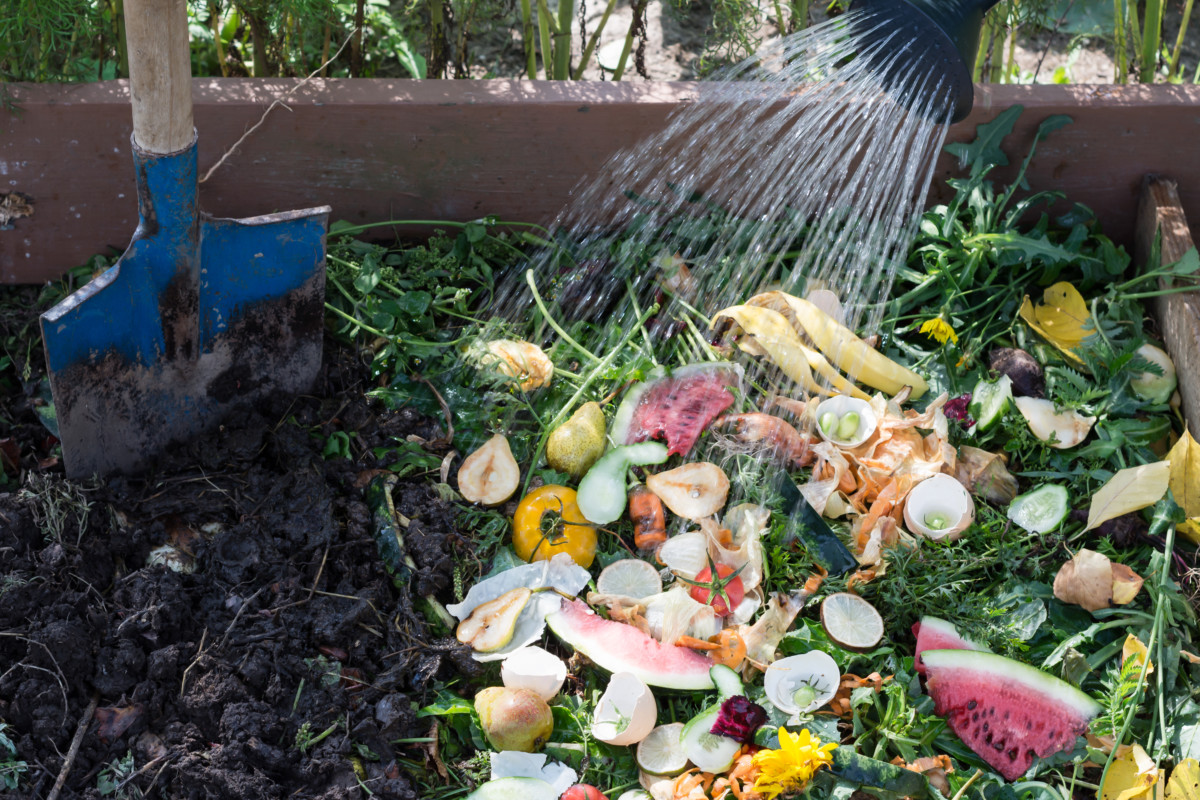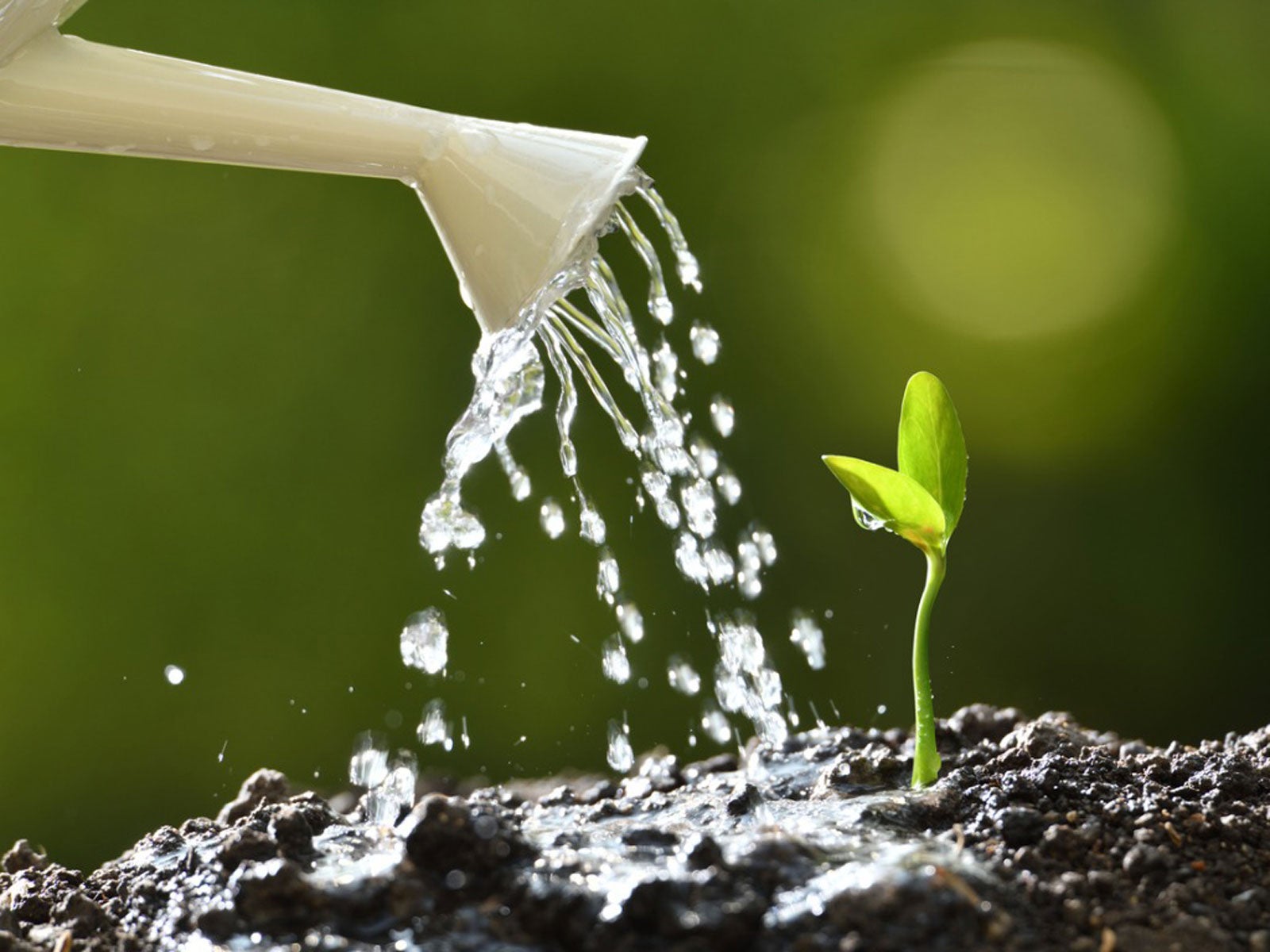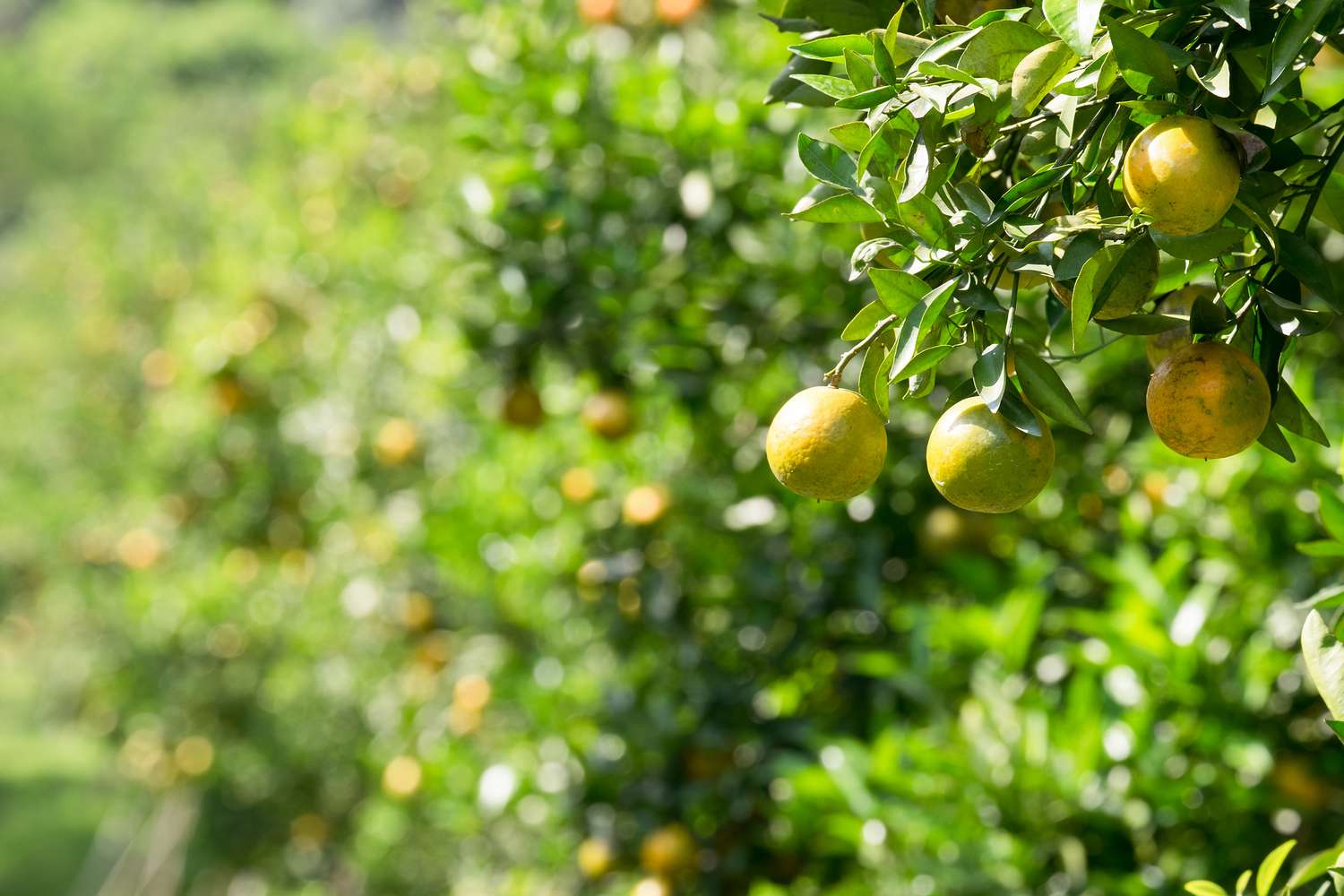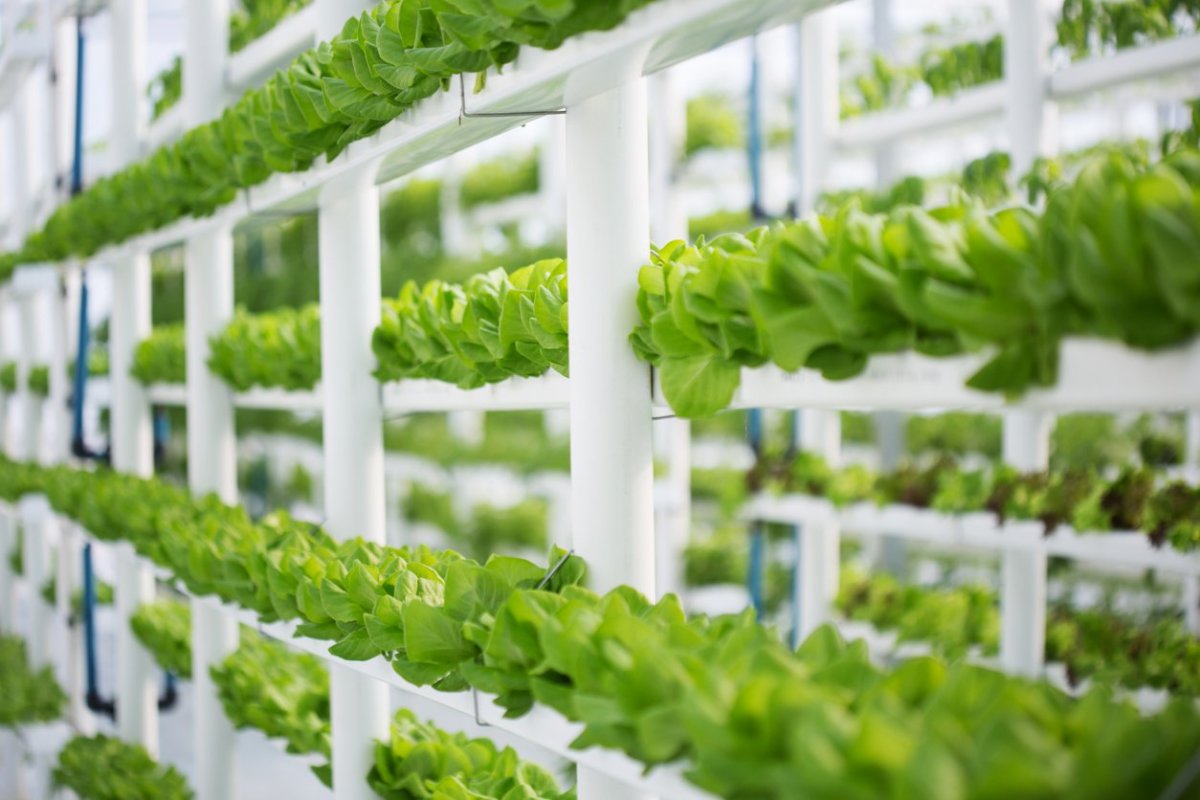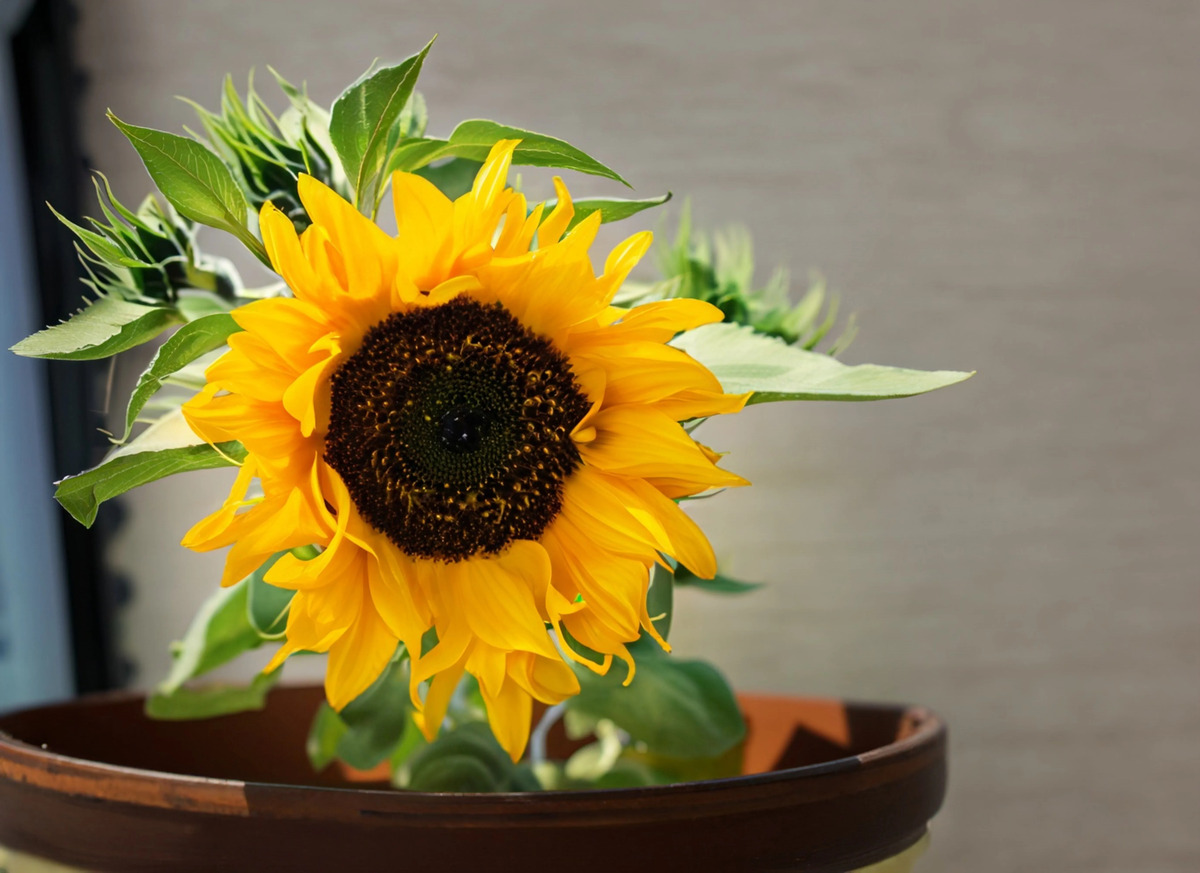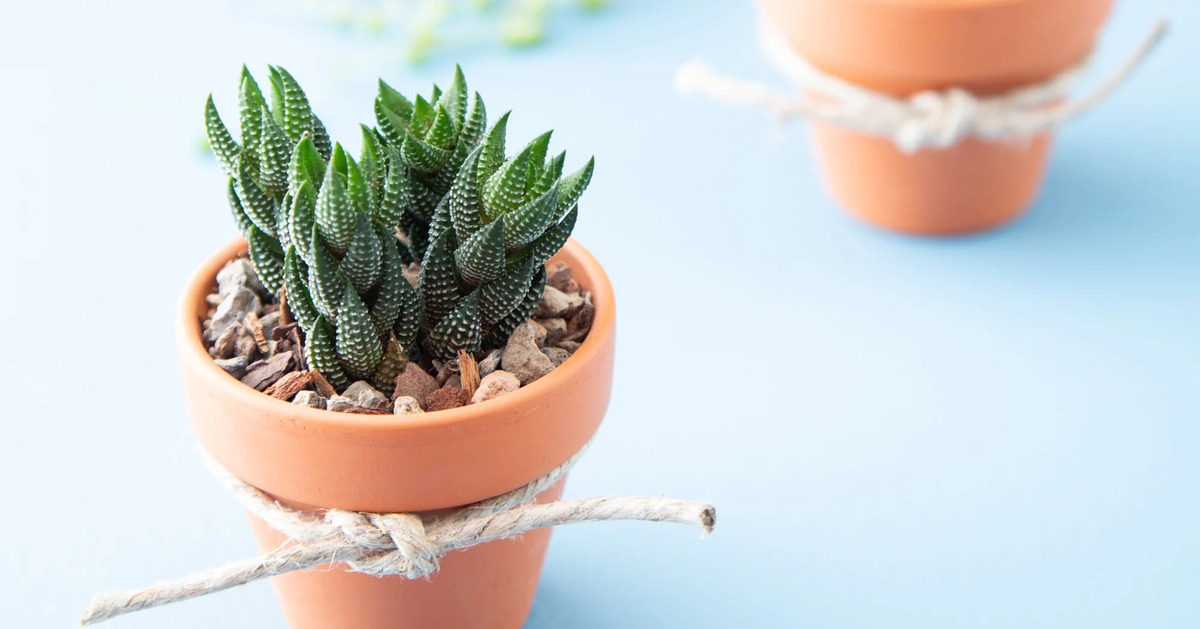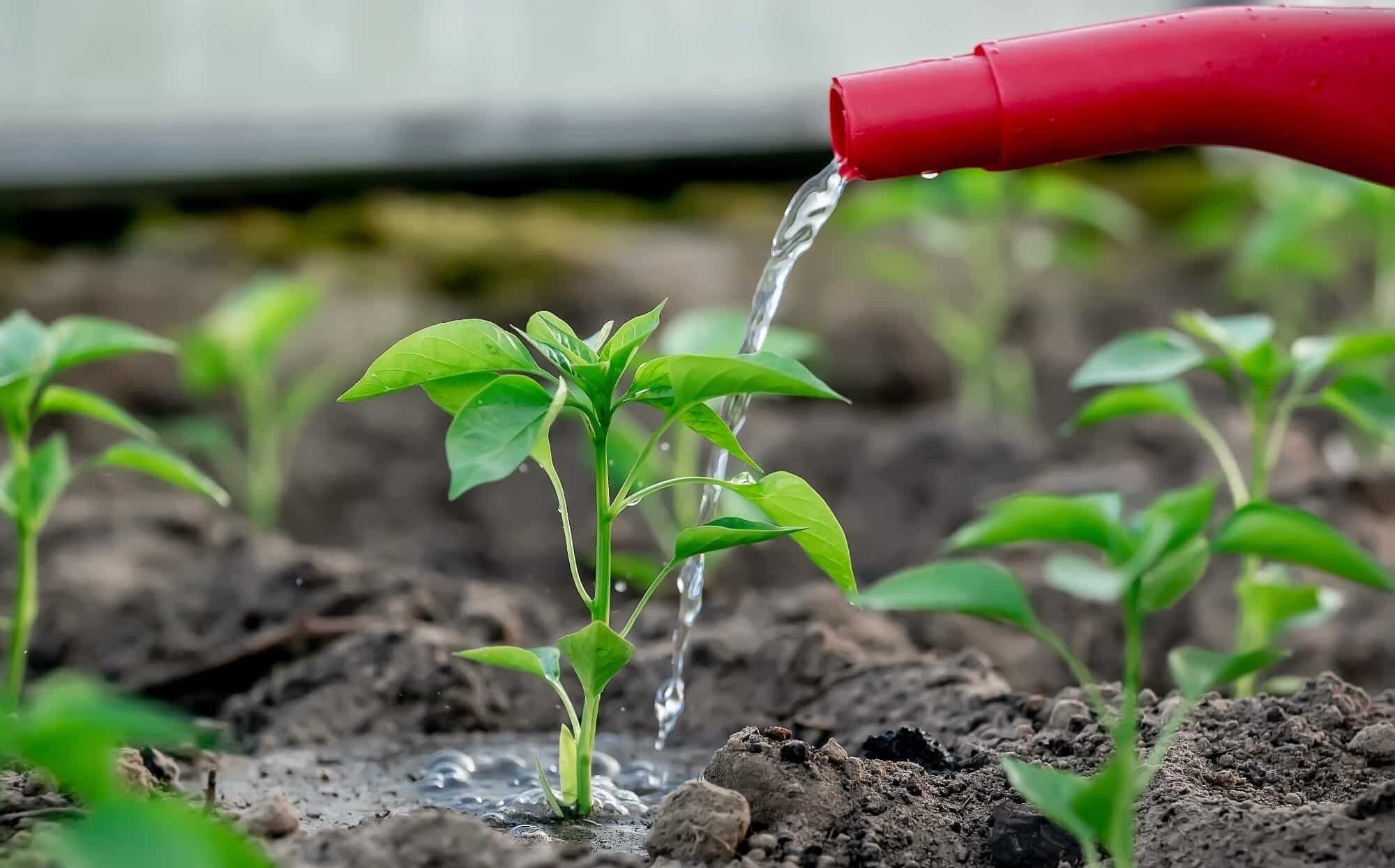Home>Gardening Techniques>Plant Care>How Often To Water Small Succulents
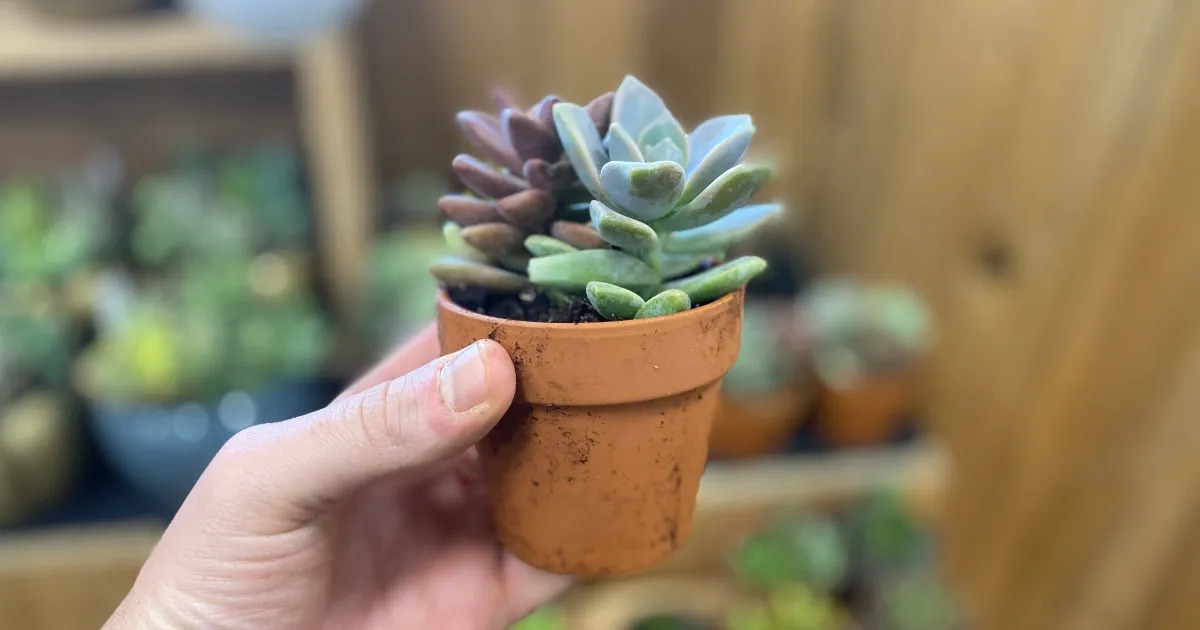

Plant Care
How Often To Water Small Succulents
Modified: February 9, 2024
Learn the best plant care tips for small succulents, including how often to water them. Discover the perfect watering schedule to keep your succulents thriving.
(Many of the links in this article redirect to a specific reviewed product. Your purchase of these products through affiliate links helps to generate commission for Chicagolandgardening.com, at no extra cost. Learn more)
Table of Contents
Introduction
Small succulents are charming and low-maintenance plants that have gained popularity among plant enthusiasts. Their unique shapes and vibrant colors make them a delightful addition to any indoor or outdoor space. One of the keys to keeping these plants healthy and thriving is understanding their watering needs.
Watering small succulents requires a delicate balance. Succulents are highly adapted to arid environments, and their fleshy leaves and stems store water for prolonged periods. Overwatering can lead to root rot and other detrimental issues, while underwatering can result in dehydration and shriveled leaves.
In this article, we will explore the factors to consider when watering small succulents, signs of underwatering and overwatering, how to water them correctly, and tips for establishing a watering schedule. Understanding these key principles will help you provide optimal care for your small succulents and ensure their health and longevity.
So, whether you are new to succulent care or looking for ways to improve your watering routine, keep reading to learn how to keep your small succulents happy and thriving.
Factors to Consider when Watering Small Succulents
When it comes to watering small succulents, several factors should be taken into consideration. Understanding these factors will help you determine the right amount and frequency of watering for your plants:
- Plant Species: Different species of succulents have varying water requirements. Some varieties, like echeverias and jade plants, prefer slightly more moisture, while others, such as Haworthias and lithops, thrive with less water. It’s essential to research and understand the specific needs of each succulent species you own.
- Season: Succulents have different water needs depending on the season. During the warmer months when they are actively growing, succulents may require more frequent watering. In contrast, during the cooler months, when growth slows down, they may need less water to avoid overhydration.
- Soil Drainage: Succulents require well-draining soil to prevent water from sitting around their roots for too long. A sandy soil mix or commercial cactus soil blend is ideal for ensuring proper drainage. Avoid using regular potting soil, as it can retain too much moisture.
- Pot Size: The size of the pot also plays a role in how often you need to water your small succulents. Smaller pots tend to dry out more quickly, while larger pots retain moisture for longer periods. Consider the size of your pot when determining your watering schedule.
- Environmental Conditions: The climate and location in which your succulents are kept will impact their watering needs. Succulents in dry, arid climates may require more regular watering, while those in humid environments will need less frequent watering.
By considering these factors, you will be able to tailor your watering routine to meet the specific needs of your small succulents. This will help prevent overwatering or underwatering and promote optimal growth and overall health for your plants.
Signs of Underwatering Small Succulents
Underwatering is a common issue that can lead to the decline of small succulents. Since succulents store water in their leaves and stems, not providing enough water can cause them to become dehydrated. Here are some signs to look out for if you suspect your small succulents are not getting enough water:
- Shriveled or Wrinkled Leaves: One of the earliest signs of underwatering is the appearance of wrinkled or shriveled leaves. When a succulent lacks water, its leaves will lose their plumpness and become withered or wrinkled.
- Dry Soil: If you consistently find the soil in the pot to be dry, even a few days after watering, it is a sign that your succulent is not receiving enough water. Check the moisture level of the soil by inserting your finger about an inch deep to determine if it’s time to water.
- Yellowing or Browning Leaves: As the dehydration progresses, the leaves of a succulent may start to turn yellow or brown. This discoloration can begin at the tips of the leaves and gradually spread throughout the plant. In severe cases, the leaves may even become crispy or brittle.
- Slow or Stunted Growth: Underwatered succulents may exhibit slow or stunted growth. Since they do not have enough water to support their metabolic processes, their growth potential becomes limited.
- Leaf Drop: In an effort to conserve moisture, an underwatered succulent may shed some of its leaves. If you notice leaves dropping spontaneously, it could be a sign that your plant is not getting enough water.
If you observe any of these signs in your small succulents, it’s crucial to adjust your watering practices accordingly. Proper hydration is vital for maintaining the health and vitality of your succulents.
Signs of Overwatering Small Succulents
Overwatering is a common mistake that can be detrimental to the health of small succulents. Since succulents are adapted to survive in arid conditions, excessive moisture can lead to root rot and other issues. Here are some signs to watch out for if you suspect your small succulents are being overwatered:
- Yellowing or Drooping Leaves: Overwatered succulents often develop yellowing or drooping leaves. The leaves may appear soft and mushy to the touch and lose their usual firmness. This is a clear indication that the plant is receiving more water than it can handle.
- Mold or Fungal Growth: Excess moisture in the soil creates a favorable environment for molds and fungi to thrive. Check the soil surface and around the base of the succulent for any signs of mold, mildew, or fungal growth, as this indicates excessive watering.
- Root Rot: Overwatering can cause the roots of succulents to become waterlogged and rot. If you notice a foul smell coming from the soil or see black or brown, mushy roots when you gently remove the plant from the pot, it is a clear sign of root rot.
- Wilting or Softening of the Stem: When a succulent is overwatered, the stem may start to wilt or become soft and mushy. This is a result of the excessive water causing the plant to lose structural integrity.
- Pest Infestation: Overwatered succulents are susceptible to pest attacks, such as mealybugs or fungus gnats. These pests thrive in damp environments and can further damage the already weakened plants.
If you notice any of these signs in your small succulents, it is important to adjust your watering routine immediately. Allow the soil to dry out between watering intervals and ensure that your succulents are placed in a well-draining pot and soil mix to prevent further overwatering.
How to Water Small Succulents Correctly
Proper watering techniques are crucial for the health and well-being of small succulents. Follow these guidelines to ensure you are watering your plants correctly:
- Deep Soaking: When you water your small succulents, make sure to give them a thorough, deep soak. This means watering until the water drains out of the bottom of the pot. This helps flush out any built-up salts in the soil and ensures that water reaches the roots of the plants.
- Water at the Base: Avoid watering the leaves of succulents, as this can increase the risk of fungal diseases and sunburn. Direct the water flow towards the base of the plant, allowing it to be absorbed by the roots.
- Allow the Soil to Dry: Succulents prefer dry conditions, so it is essential to allow the soil to dry out between waterings. The frequency of watering will depend on various factors such as the environment, season, and specific succulent species. As a general rule, wait until the top inch of soil is dry before watering again.
- Use the “Soak and Dry” Method: Many succulent enthusiasts find success with the “soak and dry” method. This involves thoroughly watering the soil and allowing it to completely dry out before watering again. This mimics the natural cycles of rainfall in arid environments and promotes healthy root development.
- Consider the Season: Adjust your watering routine according to the changing seasons. During the active growth period in spring and summer, succulents may require more frequent watering. In contrast, reduce the frequency during the dormant period in fall and winter.
- Err on the Side of Underwatering: It is safer to underwater your succulents than to overwater them. Succulents can tolerate short periods of drought, but they are susceptible to rot and other issues if consistently overwatered. When in doubt, it is better to wait a little longer before watering again.
Remember, each succulent is unique, and it may take some trial and error to discover the watering routine that works best for your plants. Pay attention to their response and adjust accordingly to ensure their optimal health and growth.
Watering Schedule for Small Succulents
Establishing a proper watering schedule is crucial for the overall health and well-being of small succulents. While the specific watering needs may vary depending on the factors mentioned earlier, here are some general guidelines to help you create a watering schedule for your small succulents:
- Check the Soil Moisture: Before watering your succulents, always check the moisture level of the soil. Stick your finger about an inch into the soil to feel if it is dry. If the soil feels moist, it is best to wait before watering.
- Observe the Plant’s Response: Pay close attention to how your succulents respond after watering. If the leaves plump up and look healthy, it is a good sign that your watering schedule is appropriate. However, if the leaves appear wrinkled or start to droop, it may indicate that your succulents need more frequent watering.
- Consider the Seasonal Changes: Adjust your watering schedule based on the seasons. During the warmer months when succulents are actively growing, they may require more frequent watering. As the temperature drops in the cooler months, reduce the frequency of watering to account for their dormant period.
- Avoid Overwatering: Remember that overwatering is more detrimental to succulents than underwatering. It is better to underwater and let the soil dry out between watering sessions than to risk root rot from excessive moisture. Err on the side of caution and water less frequently if you are unsure.
- Observe the Environmental Conditions: Take into consideration the climate and humidity level of your location. In drier and arid environments, succulents may need more frequent watering, while in more humid conditions, they may require less water.
- Adapt to Individual Plant Needs: Each succulent is unique, and their watering needs may vary even within the same species. Some succulents may thrive with more water, while others prefer drier conditions. Pay attention to how each plant responds to your watering schedule and adjust accordingly.
Remember, it is always better to underwater your small succulents than to overwater them. As you observe and learn more about your plants, you will be able to fine-tune their watering schedule to promote optimal growth and health.
Tips for Proper Succulent Watering
Proper watering is crucial for the health and wellness of your small succulents. Here are some helpful tips to ensure you are watering your succulents correctly:
- Use the Right Soil Mix: Succulents require well-draining soil to prevent waterlogged roots. Use a specialized succulent or cactus soil mix or create your own by combining regular potting soil with perlite or coarse sand to improve drainage.
- Choose the Right Pot: Use a pot with drainage holes to allow excess water to escape. This will prevent water from sitting in the bottom of the pot and potentially causing root rot. If your favorite decorative pot doesn’t have drainage holes, consider double potting by placing your succulent in a plastic grow pot with drainage and then placing it inside the decorative pot.
- Water from the Bottom: Alternatively, you can water your succulents from the bottom. Place the pot in a tray with water, and allow the plants to absorb water through the drainage holes for about 15-20 minutes. Remove any excess water from the tray to avoid overhydration.
- Avoid Leaf Watering: Direct water toward the base of the plant and avoid wetting the leaves excessively. Wet leaves can increase the risk of fungal diseases and sunburn, especially when exposed to direct sunlight.
- Water During the Morning: It is best to water small succulents in the morning. This allows any excess moisture on the leaves to dry off and helps prevent the growth of fungi and bacteria that thrive in moist conditions.
- Monitor Watering Frequency: Rather than sticking to a rigid watering schedule, monitor your succulents’ watering needs based on their individual response. Adapt your watering frequency based on the plant’s size, species, pot size, and environmental conditions.
- Consider Seasonal Adjustments: Adjust your watering routine according to the seasons. Succulents may need more water during their active growing season (spring and summer) and less water during the dormant period (fall and winter).
- Avoid Overcrowding: Overcrowded succulents can lead to increased humidity and moisture retention, which can increase the risk of overwatering. Make sure to space out your succulents and repot them if they outgrow their containers.
- Observe and Adjust: Pay close attention to how your succulents are responding to your watering practices. If you notice any signs of overwatering or underwatering, make adjustments accordingly. It is better to make small changes incrementally rather than drastically altering the watering routine.
- Learn from Experience: Every succulent is different, and it may take some trial and error to find the best watering routine for your plants. Learn from your experiences and adapt your practices based on the needs of your succulents.
By following these tips, you can provide the proper care and attention that your small succulents need to thrive. Remember that succulents are resilient plants, and with a little bit of knowledge and observation, you can ensure their long-term health and beauty.
Conclusion
Proper watering is essential for the health and vitality of small succulents. Finding the right balance between underwatering and overwatering can be a challenge, but understanding the factors that influence succulent watering needs is key. Consider the plant species, season, soil drainage, pot size, and environmental conditions when establishing a watering routine.
Signs of underwatering include shriveled leaves, dry soil, yellowing or browning leaves, slow growth, and leaf drop. Conversely, overwatering can be identified by yellowing or drooping leaves, mold or fungal growth, root rot, wilting, and pest infestation.
To water small succulents correctly, make sure to deep soak the soil, water at the base of the plant, allow the soil to dry between waterings, and use the “soak and dry” method. Adapt your watering schedule to the changing seasons and individual plant needs, always erring on the side of underwatering rather than overwatering.
Additional tips for proper succulent watering include using the right soil mix, choosing pots with drainage holes, watering from the bottom, avoiding leaf watering, watering in the morning, monitoring watering frequency, considering seasonal adjustments, avoiding overcrowding, and learning from your own experiences.
By following these guidelines and paying close attention to your succulents’ response, you can create an effective watering routine that promotes their health and longevity. Remember, each plant is unique, so don’t be afraid to experiment and adjust your watering practices accordingly.
With proper watering care, your small succulents will thrive and bring joy with their beautiful forms and vibrant colors. Enjoy the journey of caring for these remarkable plants and witness the rewards of a well-nurtured succulent collection.
